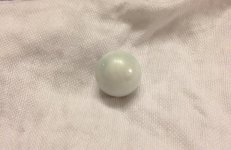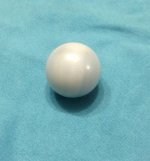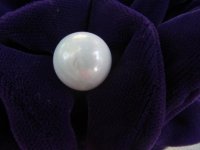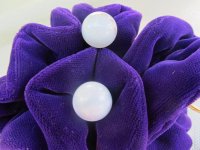Hello 'Pearls of Wisdoms',
Only one pearl up for viewing and feedback if you could, please.
Found a month ago in a wild secluded oyster bed, Atlantic. Eastern Canada seaboard.
4.5 grams. Nice internal swirls, looks uniformly round.
Will include two pictures.
Appreciate any feedback, ideas, theory's...reference direction.
cheers and good day,
Bill e


Only one pearl up for viewing and feedback if you could, please.
Found a month ago in a wild secluded oyster bed, Atlantic. Eastern Canada seaboard.
4.5 grams. Nice internal swirls, looks uniformly round.
Will include two pictures.
Appreciate any feedback, ideas, theory's...reference direction.
cheers and good day,
Bill e




